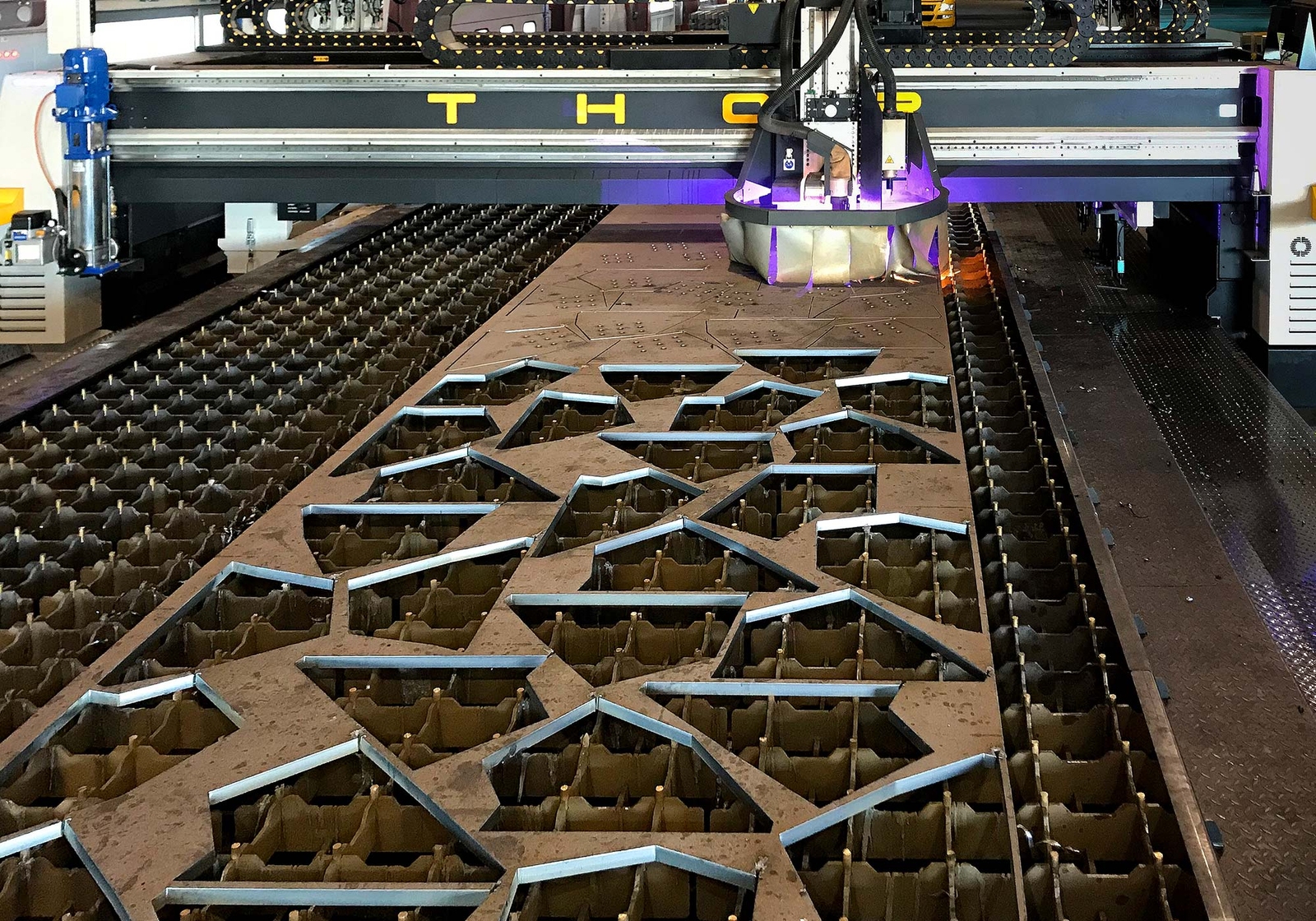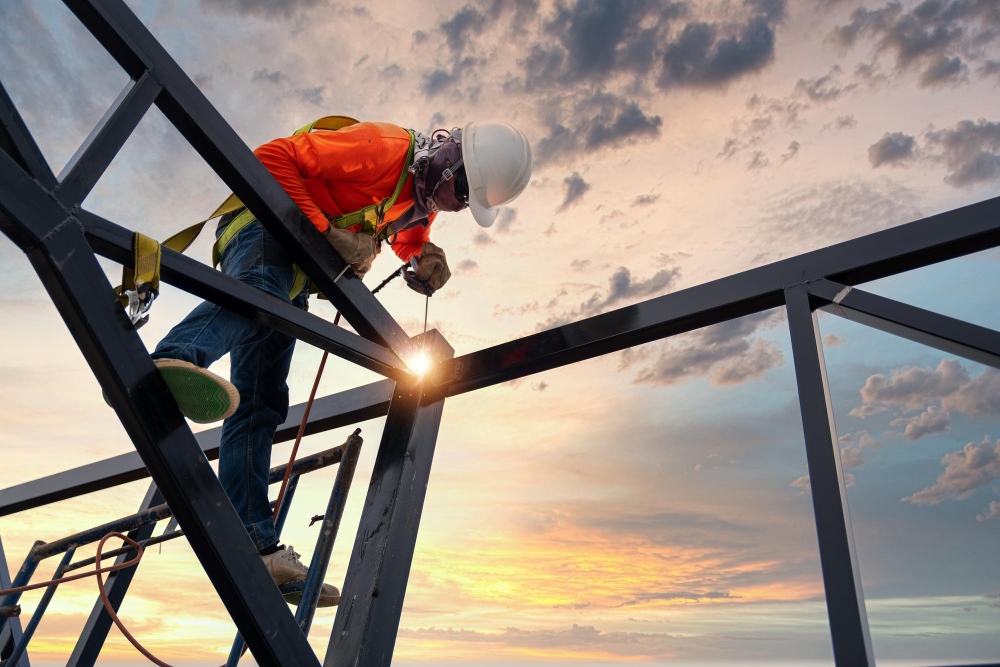Steel Fabrication Melbourne: Workmanship Satisfies Advancement
Steel Fabrication Melbourne: Workmanship Satisfies Advancement
Blog Article
Comprehensive Analysis of Cutting-Edge Techniques in Steel Manufacture Industry
As the steel construction industry proceeds to advance, the assimilation of innovative methods has actually become crucial for remaining competitive and meeting the demands of contemporary production standards. In this dynamic market where innovation plays an essential function, recognizing the nuances of these advanced strategies is not simply a choice however a requirement for those looking to build in advance in the ever-evolving globe of steel fabrication.
Laser Reducing Developments
In the world of steel manufacture, laser cutting improvements have changed the precision and efficiency of metal shaping processes. By utilizing the power of concentrated laser light beams, producers can now accomplish unrivaled levels of precision when puncturing numerous kinds of steels. This innovation makes it possible for complex layouts to be performed with marginal material wastage, making it an economical option for markets requiring high precision elements.
Among the key benefits of laser cutting is its capacity to manage a vast variety of materials, consisting of stainless-steel, aluminum, and carbon steel, effortlessly. The procedure generates tidy, burr-free sides, getting rid of the need for additional ending up steps. Furthermore, the non-contact nature of laser reducing minimizes the risk of material contamination, causing better final product.
Furthermore, laser reducing equipments can be configured to make swift, exact cuts, significantly reducing production time contrasted to standard reducing techniques. This speed and precision make laser reducing particularly suitable for automation settings where effectiveness is critical. As innovation remains to breakthrough, laser cutting is poised to play a significantly essential duty in the steel construction industry.

CNC Machining Innovations
The evolution of CNC machining technologies has introduced a brand-new age of precision and effectiveness in the steel manufacture industry. Computer System Numerical Control (CNC) makers have actually changed steel construction by supplying unequaled precision and repeatability in the production process. metal fabrication melbourne. One of the crucial technologies in CNC machining is the assimilation of innovative software systems that make it possible for real-time surveillance and changes, causing boosted efficiency and quality assurance
Additionally, the development of multi-axis CNC equipments has actually enabled the manufacture of intricate steel parts with elaborate designs that were formerly challenging to produce. These makers can do a variety of machining procedures, including milling, boring, transforming, and grinding, all with high degrees of precision.
In addition, the unification of automation and robotics in CNC machining has streamlined production processes, reduced preparations, and lessened the margin of mistake. This assimilation of innovative innovations not just increases effectiveness but also makes certain constant high quality across all fabricated steel parts. In conclusion, CNC machining developments remain to drive innovations in the steel manufacture industry, setting new requirements for precision and productivity.
Automated Welding Technologies
Automated welding innovations have changed the steel construction sector, enhancing effectiveness and accuracy in the welding process. These innovative innovations make use of computer-controlled systems to automate the welding process, causing greater efficiency degrees and boosted weld quality. One of the vital advantages of automated welding is the capability to do intricate welds with consistent precision, decreasing the likelihood of mistakes and revamp.
Robot welding systems are at the forefront of automated welding modern technologies, offering exceptional speed and precision. These systems can take care of a vast array of welding jobs, from straightforward to detailed, easily (Alpha reo). By using advanced sensing units and software, robotic welders can adapt to variants in material and joint geometry, guaranteeing an uniform and reliable weld
Additionally, automated welding innovations enhance work environment safety and security by reducing the exposure of human welders to unsafe fumes and extreme warm. As the steel fabrication sector continues to progress, integrating automated welding modern technologies will be necessary for business aiming to stay affordable and meet the expanding demands for high-quality bonded products.
Robotics Combination in Manufacture
Utilizing robot systems in fabrication procedures has actually come to be an essential method for improving effectiveness and accuracy in modern-day production environments. Robotics assimilation in steel fabrication provides a myriad of advantages, including raised productivity, enhanced quality assurance, and enhanced security measures. These advanced robotic systems are furnished with advanced sensing units and programming abilities, enabling them to carry out complex jobs with a high level of precision and repeatability.
One of the vital benefits of robotics integration in steel manufacture is the capability to automate recurring jobs, such as material handling, reducing, welding, and setting up procedures. This not just quickens production cycles however also decreases the threat of human mistake, resulting in higher overall item quality. Additionally, robots can run 24/7, dramatically enhancing metal fabrication melbourne manufacturing outcome and conference limited project deadlines.

3D Printing in Steel Manufacturing
Having actually changed the steel fabrication market with robotics combination, the blossoming exploration of 3D printing in steel production is poised to more development the world of modern-day production techniques. 3D printing, likewise referred to as additive production, supplies unmatched design liberty and complexity, making it possible for the creation of detailed steel structures that were previously unattainable through typical manufacturing methods. By utilizing computer-aided style (CAD) software, manufacturers can specifically regulate the layer-by-layer deposition of steel material, resulting in get rid of improved geometries and functionalities.
One of the essential benefits of 3D printing in steel manufacturing is its capability to minimize product waste substantially. Unlike subtractive manufacturing processes where excess product is cut away, 3D printing only utilizes the needed amount of steel needed for the last component. This efficiency not just results in set you back financial savings but also lines up with sustainable production methods by reducing environmental effect.
In addition, 3D printing allows rapid prototyping and modification, enabling the manufacturing of tiny sets of complicated steel parts with brief preparations. As the innovation remains to develop and come to be a lot more easily accessible, its combination right into mainstream steel construction processes is anticipated to drive development and effectiveness throughout the market.
Final Thought
To conclude, the steel construction market has actually seen substantial developments in techniques such as laser cutting, CNC machining, automated welding, robotics combination, and 3D printing. These sophisticated modern technologies have changed the way steel products are produced, resulting in increased accuracy, performance, and cost-effectiveness. Proceeded investment in these ingenious techniques is critical for the sector to stay affordable and satisfy the demands of contemporary manufacturing processes.
As the steel manufacture industry proceeds to progress, the combination of cutting-edge techniques has ended up being essential for staying competitive and satisfying the demands of modern-day manufacturing requirements.One of the key advantages of laser cutting is its ability to take care of a vast array of materials, including stainless steel, light weight aluminum, and carbon steel, with simplicity.Automated welding innovations have revolutionized the steel construction industry, boosting effectiveness and precision in the welding process.Having changed the steel fabrication market with robotics combination, the growing expedition of 3D printing in steel production is poised to more advance the realm of modern-day manufacturing techniques.In verdict, the steel fabrication sector has seen significant advancements in methods such as laser cutting, CNC machining, automated welding, robotics assimilation, and 3D printing.
Report this page